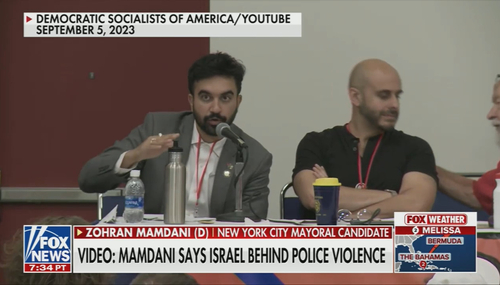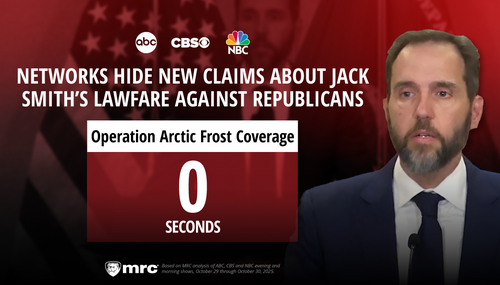Craig Shirley, author of several large tomes on Ronald Reagan's political history, is merciless on Real Clear Politics toward MSNBC star Chris Matthews and his new book on "Tip and the Gipper."
This isn't a book about Reagan or Tip O'Neill, he writes. "It is the history of Chris Matthews before he became the Chris Matthews we see on cable television today. It falls into the category of micro personal history, but is so elfin as to be inconsequential." You can't find Matthews even mentioned in the index of Tip O'Neill's memoir, he reports.
Matthews has assured Washington for years that he was a close aide and confidant to the former speaker of the House. Presumably in support of this narrative, Matthews invites readers of “Tip and the Gipper” to also look at O’Neill’s autobiography, “Man of the House.” That book provided some important source material for his own, says Matthews.
So this historian closely examined O’Neill’s book -- and found no mention of Chris Matthews in the index. The photo section was also inspected. No pictures of Matthews. Was Matthews the “ghost” on O’Neill’s book? No -- William Novak aided in this task. So is Matthews in the dedication, then? No again. Only in the acknowledgements section does his name appear, but only alongside the names of dozens of other staffers and individuals.
Other than that, there is no mention -- zip, nada -- of Matthews in the body of Tip O’Neill’s tome, though plenty of other aides and individuals are mentioned throughout and often warmly. “Man of the House,” by the way, is a treasure-trove of Reagan bashing, despite the hollow plea of Matthews that the two men were really the best of friends.
Then he gets to the rough part about the teenage diary:
Matthews’s book does not concern a single day, but it’s a kind of micro personal history with a narrow focus: the relationship between two men. The trick to writing personal micro history, however, is make the story compelling to readers by putting them in the room where action is taking place. Most authors do this with detail. Matthews does not.
His book reads like an unimaginative teenager’s dry diary crammed full of first person pronouns. (I asked the publisher for an unedited copy of Matthews’s diary, by the way, on which his new book is partly based. That never materialized.) Strangely, Matthews does not even tell the reader much that is interesting about himself, save the advice he was giving O’Neill or the people who were championing his career. He writes about direct-mail fundraising, but omits the nasty hit piece signed by O’Neill that made Reagan so furious he wrote about it in his own diary.
On one point Matthews does relate something interesting about himself. It seems Chris habitually got into trouble with O’Neill over -- you guessed it -- his penchant for egregious self-promotion. He also apparently worked hard to plant embarrassing stories about Reagan, according to “Tip and the Gipper.”
Another major failing of the book: The attempt to convince readers that O’Neill and Reagan were close chums and that Reagan loved making compromises. Nothing could be further from the truth. “Tip and the Gipper” is essentially a theory in search of facts. Matthews tries hard to make the case that Reagan and O’Neill were fraternity brothers of a sort, but never really presents the evidence except that they got together on St. Patrick’s Day. To the extent that they were polite (though not always) with each other is more a reflection of their upbringing than any sort of close relationship. To wit, O’Neill died in January 1994. Attending the funeral in Boston were both Jimmy Carter and Gerald Ford. Reagan did not attend, although later that year he attended the funeral of Richard Nixon.
Reagan’s close aide Mike Deaver once told me that the Gipper was “the most competitive son of a bitch who ever lived.” Truth be told, Ronald Reagan loved conflict, loved competition and hated losing. He was no “Great Compromiser,” as Matthews alleges. That was Henry Clay. Reagan was the Great Communicator, but he was also the Great Combatant. Just ask anyone who went up against him over the years. Stu Spencer, who knew Reagan beginning in 1965, told me often he thought Reagan was the toughest and most resilient man he ever knew. Another longtime Reagan confidant, Martin Anderson, called him “warmly ruthless.”
From the time he took on the administration at Eureka College, to his fights with studio moguls in Hollywood, to his fiery speech for Barry Goldwater in 1964, to challenging -- and conquering -- the GOP establishment in 1966, 1976 and 1980, to taking on the establishment over the Panama Canal treaties, to his own government shutdowns, to firing the nation’s air traffic controllers to staring down Gorbachev at Reykjavik (whew) -- this was not a man who was conflict-averse.
Shirley singled out several whoppers in the book:
Matthews’s outlandish claim that O’Neill was the first “approved” person to see Reagan after the assassination attempt on the president’s life in 1981 is patently false. O’Neill only saw Reagan a week after the shooting (and many “approved” people had already been in to see Reagan, including Jim Baker, Ed Meese, Paul Laxalt, Bill Clark and others). Early on, Matthews says Reagan should be seen as more than just an actor, and yet his book is studded with snarky asides about Reagan’s movie career.
...as O’Neill’s press secretary (and later) Matthews has been a harshly cruel polemicist for the Democrats. His own rhetorical record is replete with false accusations against Reagan, the most vicious being that Reagan was a racist.
For example, Matthews has asserted many times that Reagan invented Chicago’s notorious “welfare queen” on the 1976 campaign trail. In fact, her existence is well-documented. Her name was Linda Taylor and she was prosecuted for fraud by authorities who considered her one of the greatest welfare cheats in history. Her feats were recounted by the Washington Post and the New York Times, and included in Lou Cannon’s Reagan biographies. When Taylor was sentenced to prison in 1977, the Associated Press story stated that “her schemes, aliases, and disguises were so numerous there is no telling how much she bilked out of welfare agencies, but from early 1973 to mid-1974 she used 14 aliases to obtain $150,000.”




